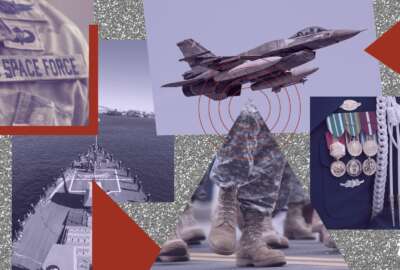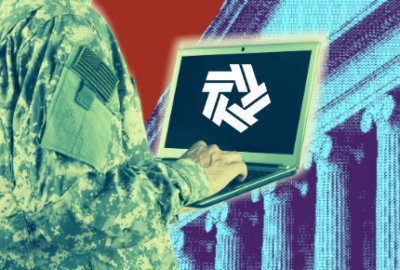
The Army of 2040 will field a tech savvy generation
Army leaders expect soldiers in 2040 to have greater technical abilities than their predecessors, and that will involve different training methods.
The Army may be putting its final touches on the plan for the Army of 2030, but it is already looking ahead to building its Army of 2040. The Army Futures Command (AFC) will develop the concept and a rough draft of the plan should reach completion this fall.
With quickly changing technology, that plan will be as much about predicting the future as it is about planning requirements, addressing long-term training needs and getting new equipment into the field.
“I believe we have about an 18-to-24 month window that we need to pursue with a sense of urgency to figure out what’s going to be different, what’s the operating environment going to look like, not to get it right, but to make sure we don’t get it really wrong,” said Gen. James Rainey, commanding general of AFC, during the Association of the United States Army (AUSA’s) Global Force Symposium on Wednesday.
Addressing the Army’s problems with recruiting enough soldiers, Rainey said it plans for a full personnel compliment in the Army by 2040. He said getting it there could easily take seven-to-10 years and the Army needs not just more recruits, but trained officers and NCOs.
“One of our superpowers as an Army is the quality of leaders we produce. So the assessment programs looking at our battalion commanders, brigade commanders, command sergeant majors we need to make sure we get that right. And I could go on and on. Recruiting people, we got to make sure that we preserve the all-volunteer force,” Rainey said.
Training for 17 years in the future has to take into account technology that will continue to evolve, and that will require skilled operators. The Army’s Training and Doctrine Command will need systems to train for new skill sets.
Lt. Gen. Scott McKean, deputy commanding general for futures and concepts at AFC, said soldiers in the future will also need to learn in a different way than how today’s senior officers learned.
“We are digital immigrants. We are not digital natives. And today’s young lieutenants, young specialists out there will be in position similar to what we are in now. In 2040, what’s their skill set? And what’s going to be important to them? We’re talking about a lot of capabilities that are important to us today, based off our experience set,” McKean said.
The Army expects artificial intelligence and machine learning to dictate battlefield capabilities. However, Army leaders were quick to note that autonomous capabilities did not mean machines making the decisions.
“Just like a working dog that has a human that gets it to the location so that it can do what only that dog can do, I think we’re going to see a flip in 2040, where humans are doing those functions that allow the machine to get into a position of relative advantage, not the machine getting humans into a position,” said Lt. Gen. Ross Coffman, deputy commander at AFC.
In a nod toward the future of AI informed battlefield logistics, the AFC will begin a new cross-functional team dedicated to contested logistics. It is scheduled to start work next month. Cross-functional teams (CFTs) work together at developing modernization efforts. The original six CFTs focused on Army modernization priorities including long-range precision firing and precision navigation and timing.
Rainey said that as promising as the shiny new objects of technology can be, it won’t matter if the Army can’t get them into the field fast enough.
“As far as how fast we can go, it’s more the acquisition process than the requirements process. And we’ve been given increased authorities by Congress, but we’ve probably cut the average time in half. We need to cut it again in half and probably in half one more time,” Rainey said. “From the time we see something we know we need, until it’s a no kidding capability, I’d like to see that get down to about two-to-three years.”
Copyright © 2024 Federal News Network. All rights reserved. This website is not intended for users located within the European Economic Area.
Alexandra Lohr, a former staff member, covered the Defense Department for Federal News Network until September 2023.





